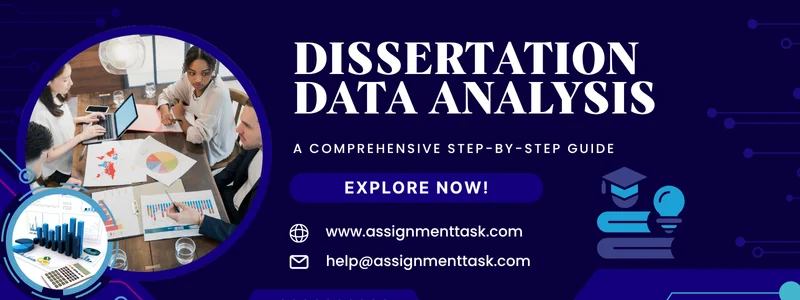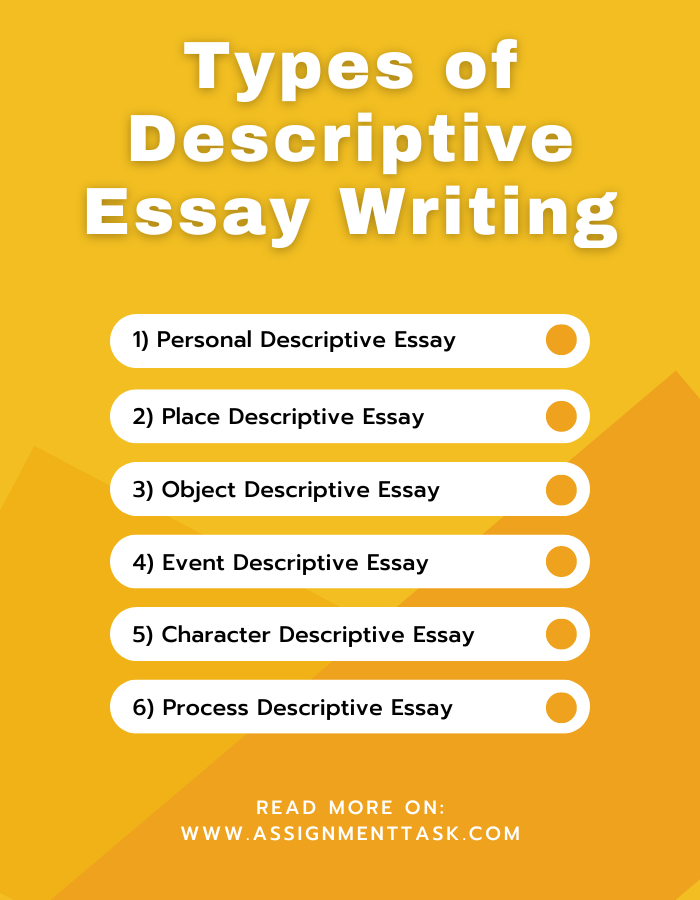Dissertation Data Analysis
- Assignment Task Blog
- Oct 01, 2025
- Dissertation
A data analysis dissertation is a time-consuming and difficult task that requires extensive research and experience. Fortunately, proper planning and execution can lead to the successful completion of a data analysis dissertation.
As a student, you must understand the importance of having a strong and well-written dissertation, particularly in terms of data analysis. Proper data analysis is critical to the outcome of your study and may frequently make or break a dissertation.
To get a better understanding, you may review this blog on dissertation data analysis.
Understanding Dissertation Data Analysis
A dissertation data analysis is one of the major parts of any dissertation where you need to demonstrate your unique research abilities. You always need to build up your essential skills for a dissertation data analysis.
The dissertation data analysis chapter provides you with an output of all calculations, result interpretations, with detailed discussion of the results in the light of various theories along with evidences.
Typically, this chapter provides with qualitative data analysis which do not need any calculation. It is always a very important chapter in your dissertation assignment paper.
Tired with Your Dissertation and Need Someone's Help? Here We Provide Dissertation Sample Written From Scratch. Checkout Now!
Common Data Analysis Research Methods Used in Dissertations
The dissertation topic selected by you informs you the way you are going to collect and analyse data.
1. Qualitative vs Quantitative Research
Quantitative Research
The quantitative data is the numerical data that is used for the statistical analysis as well mathematical calculation. The quantitative data can answer research questions like how many, how, how much, etc.
A big advantage of using this quantitative data is that it can be verified very much conveniently and evaluated by the researchers. It allows you to replicate the research outcomes. The qualitative data can also be quantified and converted into numbers. Quantitative data is usually analysed by using the data analysis software tools like MATLAB, Eviews, SPSS, etc.
Qualitative Data
Studies that use the qualitative data mostly ask “how” and “why” questions. Ex: Why online marketing is more effective nowadays? How to know your target customers? These are the non-numerical primary data and are mostly represented by opinions of the relevant researchers.
The qualitative data also includes vial data like the infographics that are gathered from websites, reports or other sources that do not involve any interaction between the human participant and the researcher. Ex: Various texts and images that are used in PESTLE, SWOT and 4ps analysis. Different types of journals, books, articles, conference pars, etc. are examples of the secondary qualitative data.
The qualitative data analysis provides a very deep insight into the issue of being under the study since the respondents are not limited to give more detailed answers.
Get Answers: Qualitative vs Quantitative Research Methodology
2. Primary vs Secondary Research
Primary Data
It is the very first hand information that is collected by the researcher for any current or specific purpose via interviews or surveys while the secondary data is the already existing information that is collected by someone else for a different purpose and is also available for the others. This is elaborated as follows:
- Primary Data: It is the very original data as collected by the main researcher for the very first time for the needs of your current research.
- Originality: It should be new and unpublished
- Relevance: It needs to be very much relevant and specific with the research questions.
- Reliability and Accuracy: It is considered very much reliable and accurate since here the researcher controls the whole data collection process.
- Methods of Collection: Experiments, interviews, observation, surveys, etc. Ex: conducting extensive customer surveys.
Secondary Data
It is the information that has been collected already as well published by others.
- Characteristics: It is not original and was collected for a different purpose.
- Lesser Specific: It might not be very much relevant with the research question.
- Time and Cost Effective: It is quicker and easier to obtain the primary data.
- Sources: Various sources of primary data are government publications, websites, articles, books, reports, etc. Ex: going through a marker research report for setting up a new business.
Read Blog: Qualitative Research Topics to Get Success
Two Major Types of Analysis You Should Know
The basic statistical analysis and advanced radical analysis are the 2 major types of data analysis tools. The basic statistical analysis involves describing as week summarizing the collected data by using various statistical methods like mode, median and mean.
The advanced statistical analysis are more complex techniques like the regression analysis to study the relationships in between the variables, cause effect analysis, forecasting, predicting models, etc.
Descriptive statistics: It is used to summarize the main features of any data set.
Important Strategies for Dissertation Data Analysis
The most important strategies for the dissertation data analysis include having a crystal-clear research plan with a very well defined hypotheses and questions by ensuring a very good data quality. The Key Strategies for Effective Dissertation Data Analysis are as follows:
Before Collecting the Data
- Develop your clear research plan: Here, you need to outline all your research questions with hypotheses as well a detailed data collection strategy.
- Use good and reliable measures: Always select the instruments to measure the constructs very accurately with reliability.
- Take note the ethical considerations: You always need to understand as well plan adhered to the data protected regulations to obtain the consent from the participants.
Data Collection and Preparation
- Ensure the data quality: here you need to take the steps in order to ensure that the quality of the data is good accurate and complete.
- Prepare clean data: organize your data set well by removing all the inconsistencies.
- Maintain documentation: always keep your meticulous record of the data and analyze them to ensure the transparency.
Interpretation and Analysis
- Choose the best analysis techniques: you always need to select any qualitative or statistical method to match your data type as well the research questions.
- Validate the findings: always confirm the accuracy as well reliability of your research results.
- Recognize the trends: always consider the patterns and trend of your data set for a proper analysis.
- Prevent bias: always be very vigilant for any potential biases at all the stages.
- Consider the software roles: You always need to make the best use of all types of software tools like Excel for the basic analysis and for the advanced ones the options are SPSS or R.
Reporting the Results
- Interpret the findings: Always explain the significance of all your findings.
- Use clear visions: you need to present your data in figures, tables or graphs with very clear titles.
- Integrate your findings with literature: portray how your results are related to the existing literature.
Popular Tools and Software for Dissertation Data Analysis
Popular tools for the dissertation data analysis are various statistical packages like R, SPSS, Stata as well qualitative and quantitative data analysis for dissertation software tools like NVivo, Atlas.ti, and MAXQDA.
Here, you can also use various programming languages like python, excel, tableau, etc. This can be elaborated as below:
For Quantitative Data Analysis
These tools are best for analysing numerical data, including surveys and experimental results.
SPSS (Statistical Package for the Social Sciences): A widely used, user-friendly software for running statistical tests without extensive coding, ideal for social sciences and psychology.
R: An open-source programming language and environment for statistical computing and graphics, popular in academic research for its power and reproducibility.
Stata: A powerful, flexible package balancing ease of use with strong analytical capabilities, commonly used in economics and public health.
MATLAB: A high-level programming language and environment used for numerical computation, often for complex calculations and simulations.
Software tools used for Qualitative Data Analysis in dissertation methodology are as follows:
- SPSS (Statistical Package for the Social Sciences): It is a very commonly used software to run statistical tests without more coding.
- R: it is on open source programming language for different graphics and statistical computing in academic researches.
- Stata: it is a powerful and flexible software package to make string analysis easier with numerical computations.
- MATLAB: It is a high level software programing language that is used for the numerical cometary of complex calculations.
Software for qualitative data analysis are as follows:
- Nvivo: it is a comprehensive software tool for the qualitative data analysis and is mostly used for coding the interview.
- MAXQDA: It is a popular software tool for the dissertation proposal by offering various distinctive features like coding, visualization, analysis, etc.
- Atlas.ti: It is commonly used as qualitative data analyses software of the dissertation data analysis example to code, analyse as well create maps from different data sources.
Expert Tips for Writing a High-Quality Data Analysis Dissertation
- Understand the main purpose of your data analysis dissertation topic
- Begin with a clear outline
- State your research objectives very clearly
- Describe all the analytical methods
- Present all the results systematically
- Qualitative studies
- Quantitative studies
- Interpret all the results in the context
Conclusion
Studying the examples provided above will help you understand the organization and information that should be included in your own data analysis dissertation. You can also learn how to successfully analyze and present your facts, leaving a lasting impression on your readers.
These examples are not only important for completing your dissertation, but they may also be used as a reference for future academic writing tasks. Following these examples and absorbing their ideas can help you enhance your data analysis skills and increase your chances of academic achievement.
You can also contact with academic writing experts to build your data analysis dissertation.
Additional resources in the dissertation writing section are listed below for your convenience:
Dissertation Acknowledgement Examples
Breakdown of 10000 Word Dissertation
Dissertation Vs Thesis
Dissertation Writing Guide with Examples
Dissertation Proposal Help








